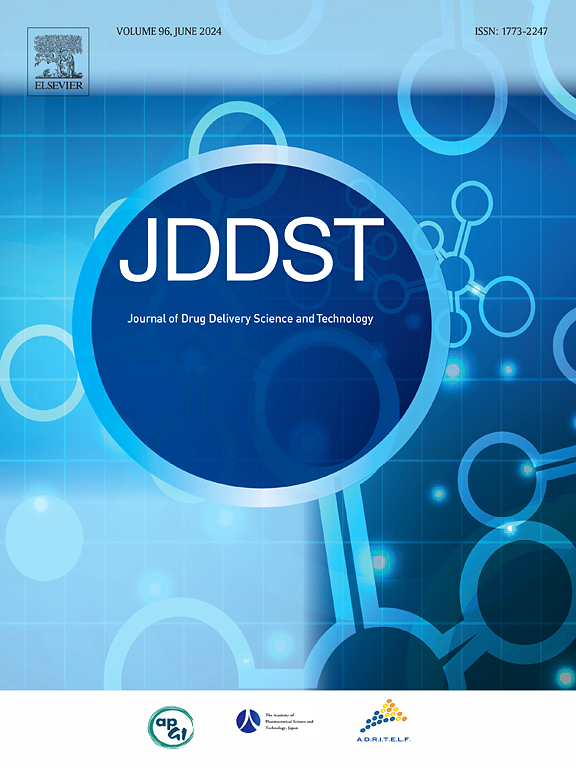Preservation of extracellular vesicles for drug delivery: A comparative evaluation of storage buffers
IF 4.5
3区 医学
Q1 PHARMACOLOGY & PHARMACY
Journal of Drug Delivery Science and Technology
Pub Date : 2025-03-22
DOI:10.1016/j.jddst.2025.106850
引用次数: 0
Abstract
Extracellular vesicles (EVs), including small EVs (sEVs) and large EVs (lEVs), are emerging as potential drug delivery carriers. However, the impact of storage buffers on their stability, particularly in drug delivery efficiency, is not well understood. This study systematically evaluated the stability of glioblastoma U87 cell-derived sEVs and lEVs stored at −80 °C in various buffers: PBS, PBS with 30 % glycerol, 6 % DMSO, or 25 mM trehalose. EVs were characterized post-isolation and analyzed after 10 weeks for morphology, particle concentration, size distribution, zeta potential, protein amount, and RNA content. Doxorubicin (Dox) was loaded into EVs, and their drug loading capability (LC) and delivery efficiency to U87 cells were assessed. Western blotting confirmed the presence of sEVs markers. EVs displayed a cup-shaped morphology with similar sizes in different buffers (170 nm for sEVs and 210 nm for lEVs), and EVs stored in PBS with trehalose had a higher zeta potential. After 10 weeks, both sEVs and lEVs exhibited a significant decrease in particle concentration and size, accompanied by an increase in zeta potential in all buffers, except the PBS-trehalose buffer. Notably, EVs morphology, total protein amount, and RNA content remained stable in all storage buffers. Importantly, the LC and cytotoxicity of Dox-loaded EVs remained comparable to freshly isolated EVs. In conclusion, these findings highlight PBS with 25 mM trehalose as an optimal buffer for short-term EVs storage at −80 °C, preserving EVs stability for drug delivery applications.

求助全文
约1分钟内获得全文
求助全文
来源期刊
CiteScore
8.00
自引率
8.00%
发文量
879
审稿时长
94 days
期刊介绍:
The Journal of Drug Delivery Science and Technology is an international journal devoted to drug delivery and pharmaceutical technology. The journal covers all innovative aspects of all pharmaceutical dosage forms and the most advanced research on controlled release, bioavailability and drug absorption, nanomedicines, gene delivery, tissue engineering, etc. Hot topics, related to manufacturing processes and quality control, are also welcomed.

 求助内容:
求助内容: 应助结果提醒方式:
应助结果提醒方式:


